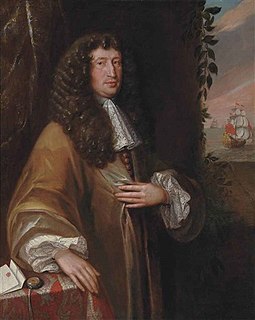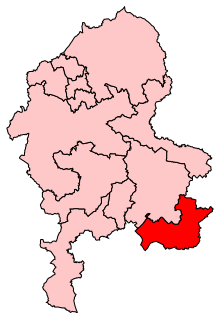Life
From a Huguenot background, Chamier was born on 6 October 1725, and baptised in the Walloon chapel, Threadneedle Street, London, on 19 October, his parents being Daniel Chamier and Susanne de la Mejanelle. Early in life he was a broker on the Stock Exchange, as his enemies in later years did not allow him to forget. [2]

Threadneedle Street is a street in the City of London, England between Bishopsgate at its northeast end and Bank junction in the southwest. It is one of nine streets that converge at Bank.

The Royal Exchange in London was founded in the 16th century by the merchant Sir Thomas Gresham on the suggestion of his factor Richard Clough to act as a centre of commerce for the City of London. The site was provided by the City of London Corporation and the Worshipful Company of Mercers, who still jointly own the freehold. It is trapezoidal in shape and is flanked by Cornhill and Threadneedle Street, which converge at Bank junction in the heart of the City. The building's original design was inspired by a bourse Gresham had seen in Antwerp and was Britain's first specialist commercial building.
Through his wife's connection Chamier obtained a place in the public service; and in January 1772 was promoted by Lord Barrington to the post of deputy secretary at war. Philip Francis brutally criticised the appointment. [2]

William Wildman Shute Barrington, 2nd Viscount Barrington PC was a British politician who sat in the House of Commons for 38 years from 1740 to 1778. He was best known for his two periods as Secretary at War during Britain's involvement in the Seven Years War and American War of Independence.

Sir Philip Francis was an Irish-born British politician and pamphleteer, the supposed author of the Letters of Junius, and the chief antagonist of Warren Hastings. His accusations against the latter led to the impeachment of Warren Hastings and Elijah Impey by Parliament. He belonged to the Whig party.
Chamier was created under-secretary of state for the southern department in 1775, and on 10 June 1778 was elected Member of Parliament for Tamworth. On 11 September 1780, a month and a day before his death, he was re-elected there. He died in Savile Row, London, on 12 October 1780, and was buried at St James's, Piccadilly. [2]

Tamworth is a constituency represented in the House of Commons of the UK Parliament since 2010 by Christopher Pincher, a Conservative.

Savile Row is a street in Mayfair, central London. Known principally for its traditional bespoke tailoring for men, the street has had a varied history that has included accommodating the headquarters of the Royal Geographical Society at 1 Savile Row, where significant British explorations to Africa and the South Pole were planned; and more recently, the Apple office of the Beatles at 3 Savile Row, where the band's final live performance was held on the roof of the building.
Associations
Chamier was an original member in 1764 of the Literary Club, and Samuel Johnson, when drawing up his scheme of a university at St Andrews, assigned to him the chair of "commercial politics". His country house was at Streatham; Johnson used to visit there, for example on his seventieth birthday, and asked Chamier for favours on behalf of acquaintances. [2]

The Club or Literary Club is a London dining club founded in February 1764 by the artist Joshua Reynolds and essayist Samuel Johnson, with Edmund Burke, the Irish philosopher-politician.

Streatham is a district in south London, England, mostly in the London Borough of Lambeth but with some areas to the west stretching out into the neighbouring London Borough of Wandsworth. It is centred 5 miles (8.0 km) south of Charing Cross. The area is identified in the London Plan as one of 35 major centres in Greater London.
Chamier was elected a fellow of the Royal Society in 1767. [3] He sat for Sir Joshua Reynolds three times (December 1762, January 1767, and November 1777), and two houses which Reynolds particularly liked were those of the Hornecks and Chamier. [2]

The President, Council and Fellows of the Royal Society of London for Improving Natural Knowledge, commonly known as the Royal Society, is a learned society. Founded on 28 November 1660, it was granted a royal charter by King Charles II as "The Royal Society". It is the oldest national scientific institution in the world. The society is the United Kingdom's and Commonwealth of Nations' Academy of Sciences and fulfils a number of roles: promoting science and its benefits, recognising excellence in science, supporting outstanding science, providing scientific advice for policy, fostering international and global co-operation, education and public engagement.
Family
Chamier married Dorothy, daughter and coheiress of Robert Wilson, merchant of St Mary Axe, London. Her sister married Thomas Bradshaw, who became private secretary to the Duke of Grafton, and joint secretary of the treasury in the Chatham and Grafton administrations. [2]
Chamier left no issue, and his property passed by will to his nephew, John Deschamps, with a testamentary injunction to take the name and arms of the Chamier family. [2]
This page is based on this
Wikipedia article Text is available under the
CC BY-SA 4.0 license; additional terms may apply.
Images, videos and audio are available under their respective licenses.

Sir Joshua Reynolds was an English painter, specialising in portraits. John Russell said he was one of the major European painters of the 18th century. He promoted the "Grand Style" in painting which depended on idealization of the imperfect. He was a founder and first president of the Royal Academy of Arts, and was knighted by George III in 1769. In 2018, the 250th anniversary of the founding of the Royal Academy of Arts in London, UK was celebrated.

Edward Craggs-Eliot, 1st Baron Eliot was an English official and politician who sat in the House of Commons from 1748 to 1784 when he was raised to the peerage as Baron Eliot.

Dr Richard Farmer FRS FSA (1735–1797) was a Shakespearean scholar and Master of Emmanuel College, Cambridge. He is known for his Essay on the Learning of Shakespeare (1767), in which he maintained that Shakespeare's knowledge of the classics was through translations, the errors of which he reproduced.

Lord Frederick Campbell was a Scottish nobleman and politician. He was lord clerk register of Scotland, 1768-1816; Member of Parliament (M.P.) for Glasgow Burghs (1761–1780) and for Argyllshire (1780–1799).

Charles FitzRoy, 1st Baron Southampton was a British Army officer who served in the Seven Years' War and a politician who sat in the House of Commons from 1759 to 1780 when he was raised to the peerage as Baron Southampton.
William Cowper was an English-born Anglican cleric in Australia who was the Archdeacon of Cumberland. His son, also named William Cowper was later the Dean of Sydney.

Alfred Edward Chalon was a Swiss portrait painter. He lived in London where he was noticed by Queen Victoria.
Sir Job Charlton, 1st Baronet KS was an English judge and politician who sat in the House of Commons between 1659 and 1679. He was Speaker of the House of Commons of England briefly in 1673.

Edmund Ayrton was an English organist who was Master of the Children of the Chapel Royal.
Dr. Thomas Gibbons (1720–1785) was a London nonconformist minister who wrote hymns, sermons, and poetry.
John Baynes (1758–1787) was an English lawyer and miscellaneous writer.

William Cooke (1711–1797) was an English cleric and academic, Provost of King's College, Cambridge from 1772 and Dean of Ely from 1780.

William Dickinson (1746–1823) was an English mezzotint engraver.
William Courthope (1808–1866) was an English officer of arms, genealogist and writer, Somerset Herald from 1854.
Samuel Okey, the younger, was a British mezzotint engraver, in later life an emigrant to British North America.
John Denne D.D. (1693–1767) was an English churchman and antiquarian, Archdeacon of Rochester from 1728.
Charles Coates was an English cleric and antiquarian.
John Clark was a Scottish land agent, Gaelic scholar and writer.



















